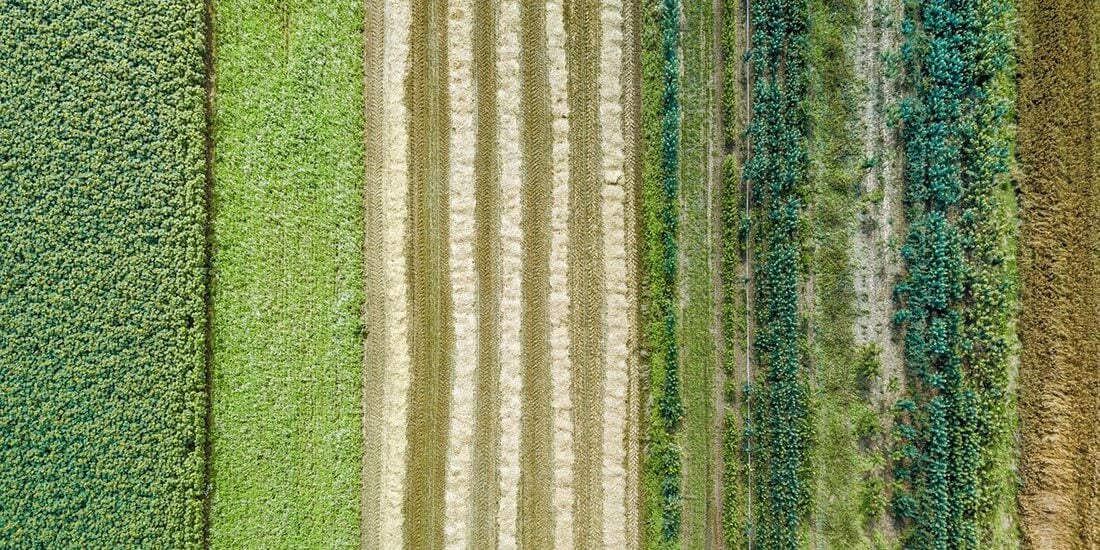Regenerative agriculture has emerged as a key approach for corporate sustainability teams looking to achieve intersecting impact targets, especially those related to climate change, deforestation, biodiversity loss, water quality, food security, farmer livelihoods, and natural resources management.
In recent years, we’ve seen companies across industries—including Patagonia, Walmart, Stella McCartney, Danone, Timberland, General Mills, Unilever, PepsiCo, and many more—announce significant investments to source from regenerative farms or to help farmers in their supply chains adopt regenerative agriculture practices.
Why We Need Regenerative Agriculture
Many corporate sustainability teams have not reached the scale or impact that they’d hoped to see—and companies and the global community at large are not on track to reach commitments for the UN Sustainable Development Goals by 2030. In many cases, this is despite committing significant resources, time, and money over the last decade. Today, more and more companies recognize they need new approaches to address complex, systemic sustainability issues.
Our global food and agriculture system is a good place to start. It accounts for almost one-third of human-caused carbon emissions, it takes up 50% of the world’s habitable land, and about one-third of all the consumable food produced each year gets lost or wasted.
In short: our global food and agriculture system is in urgent need of a change. And by transforming our food system, we have the opportunity to bring systemic, integrated solutions to some of our most wicked problems such as climate change, social and economic inequality, and biodiversity loss.
Corporate sustainability teams and companies are recognizing this too. The changemakers we work with see the enormous impact potential and return on investment that they could realize by focusing on transforming their own food and agricultural value chain.
So how can companies do this? Enter regenerative agriculture.
What Is Regenerative Agriculture?
Regenerative agriculture focuses on replenishing, restoring, and reusing our resources by shifting the principles and practices around how we farm—better aligning agriculture with natural systems.
A key feature, and benefit, of regenerative agriculture is that it takes a holistic approach to reimagining farming systems and improving ecosystem health.
Regenerative agriculture emphasizes improving soil health and water management, increasing plant diversity, reducing the use of chemicals, and diversifying farm incomes.
Key regenerative agriculture practices include:
- Rotating diverse crops
- Intercropping (or increasing crop diversity)
- No-till to low-till farming (to minimize disturbance to the soil and prevent soil erosion)
- Use of cover crops (to protect soil, boost water retention, and suppress weeds)
- Reduced pesticide and fertilizer use
- Agroforestry and silvopasture (or integrating trees or shrubs into farming systems)
- Rotational grazing
- Integrating animals as much into the farm as possible—like utilizing animal manure as fertilizer
The most promising regenerative agriculture interventions also take a farmer-centric approach, expanding the concept of regenerative agriculture beyond the field to integrate farmer and farmworker welfare and strengthen rural communities.
Regenerative Agriculture Benefits
Regenerative agriculture offers companies, farmers, and communities a range of environmental, business, and social benefits, including:
- Enhanced soil health
- Improved biodiversity and habitat for wildlife and plants
- Reduced deforestation
- A reduction in carbon emissions
- Decreased air, water, and soil pollution
- Reduced chemical contaminants in crops and natural systems
- Greater water conservation
- Natural pest management (thereby reducing use of costly pesticides)
- A boost in farm productivity and crop yields
- Increased resilience to pests, drought, floods, and climate change impacts
- Improved local food security as farmers grow more heritage and native crops
- Cost savings by limiting use of livestock feed, antibiotics, and synthetic fertilizers pesticides
Partnering For A Better Food System
For almost 20 years, we’ve helped forward-thinking multinationals build cross-sector partnerships to advance sustainable impact. So, for us, another exciting facet of regenerative agriculture is that it promotes a collaborative, partnership-focused approach between companies and the farmers in their supply chains. Companies that seek to meaningfully embrace regenerative agriculture also need to work with their farmers to understand and solve for key barriers—financial, social, environmental—that stand in the way.
In other words, in our experience, impactful regenerative agriculture requires a farmer-centric approach. This means partnering with farmers to shape localized and customized strategies to improve farming and grazing practices and transform farming systems.
Such partnerships—and regenerative agriculture more broadly—are a win for the land, for the climate, for farmers, and for companies.



